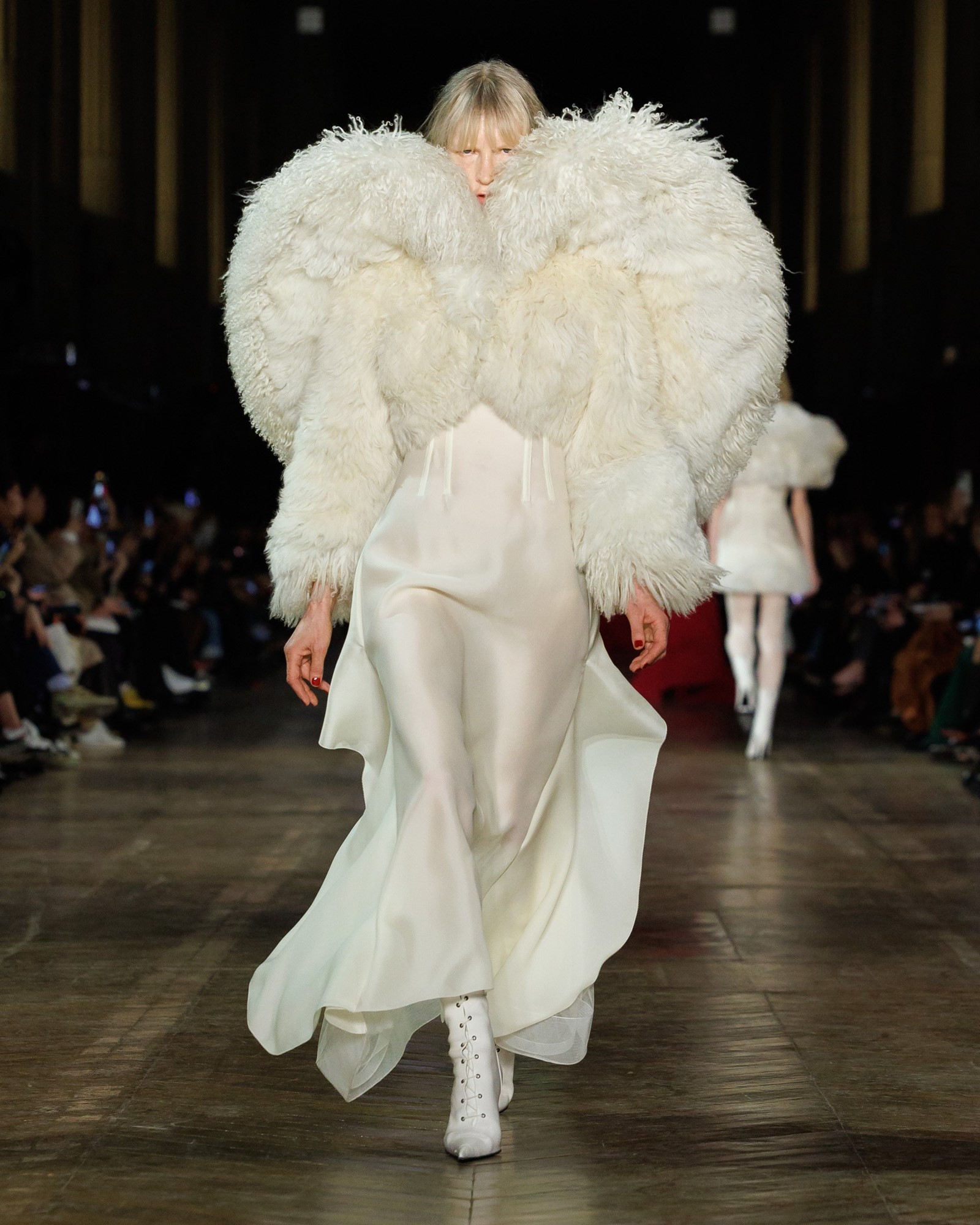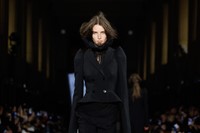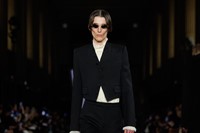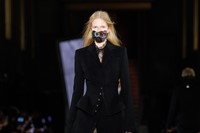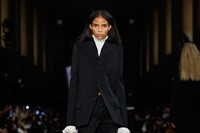The Victorian era has always cast a shadow over McQueen – past, present, and it seems future. Lee Alexander McQueen grew up in the East End of London, an area reshaped by the factories of the Industrial Revolution. He based his own graduation collection around, arguably, the capital’s first serial killer, Jack the Ripper, who murdered his victims in Whitechapel in 1888. And his clothes often referenced the dichotomies of the period’s dress and social mores, its tight-laced silhouettes simultaneously chaste and sexual, the contrast between streamlined menswear and elaborately embellished womenswear, between romance and the spectre of the macabre. McQueen’s wicked tailoring had its roots in the menswear revolution of the late 18th and early 19th century, the establishment of Savile Row as the home of a new way of dressing.
It was the archetypically Victorian figure of the dandy that inspired Seán McGirr’s Autumn/Winter 2025 collection, and his third McQueen show. The dandy was a figure who the French novelist and poet Jules Amédée Barbey d’Aurevilly described, in 1859, as “the black prince of elegance.” If dandyism has been twisted, over the years, to mean those overly concerned with appearance in a flamboyant, conceited fashion, the original meaning was more sombre, subdued and sharp.
All of which resonated, and was reiterated in McGirr’s opening salvo of sharp black suits – elegant, princely – with jutting hips and hunched-up shoulders, the toes of their shoes yanked out to attenuated proportions, making the models resembled scribbled ink drawings come to life. He cited Oscar Wilde – born in Dublin, like McGirr – but also female figures, the early 20th-century American painter Romaine Brooks and the male impersonator Vesta Tilley. Both were renowned for their wardrobes that challenged and crossed gender binaries, at a time when doing so could get you arrested. Dandy has no gender.
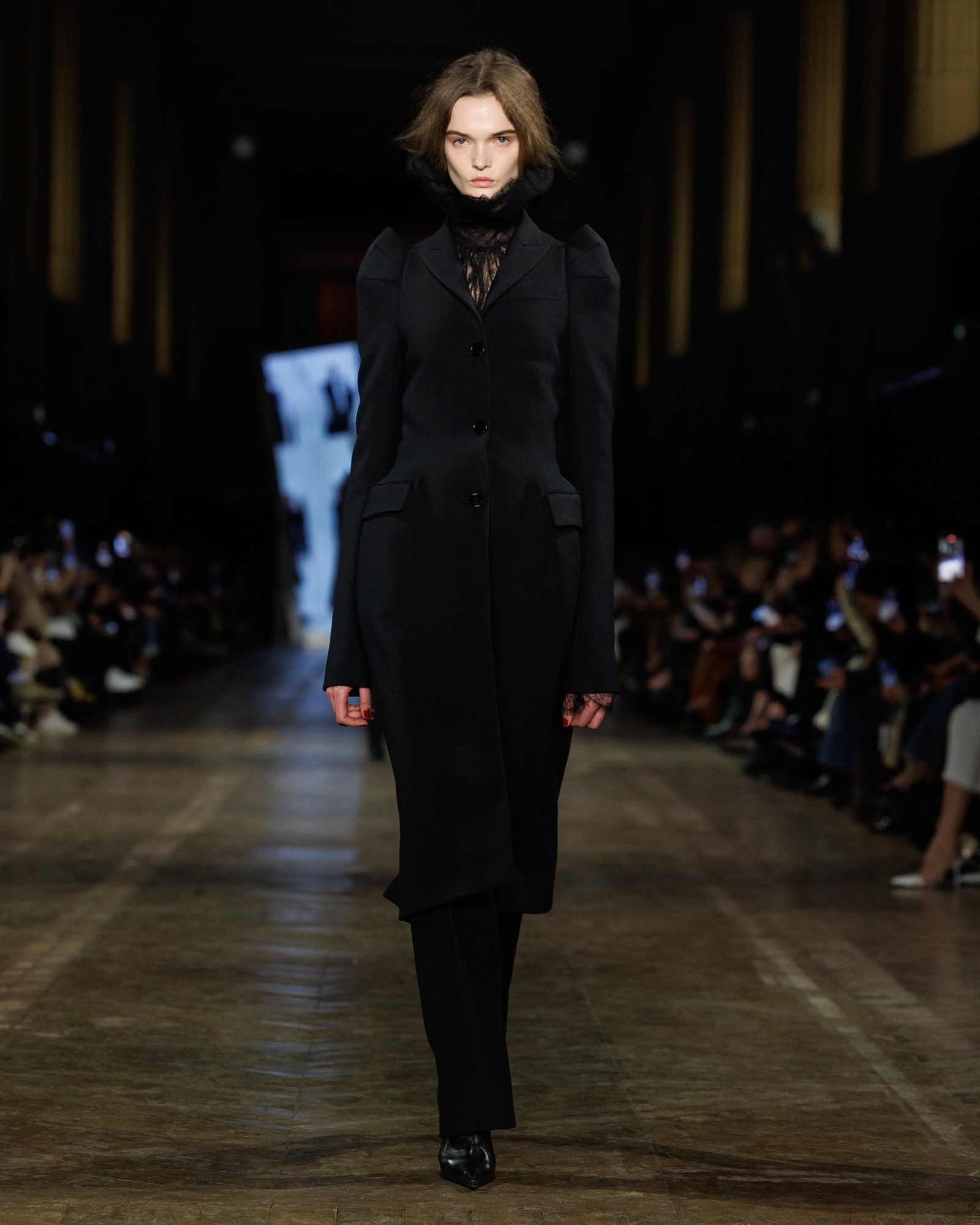

“I wanted to explore the enduring relevance of the dandy’s radical spirit in our modern world,” McGirr said – and, let’s be honest, everyone will always want a sharp black suit. Charles Baudelaire described dandyism as “the delight in causing astonishment, and the proud satisfaction of never oneself being astonished”. So McGirr’s exploration of Victoriana was a push and pull between extravagance and restraint, tailoring versus extravagance embroidery, flounces, laces and satin.
This collection showed a softer side to McGirr, and to McQueen; the romance that McQueen often explored to cut through the sharpness of his tailoring. Billowing gowns came in Victorian watercolour shapes of peppermint, lilac and ivory, alongside Cardinal scarlet – sometimes mixed together, red boots beneath sweet dress, like an open wound. And the high-knotted cravats and perfectly starched shirts of the dandy’s wardrobe become extravagant gestures of ruffles cascading around evening dresses, or worn as deconstructed blouses under slick tailoring.
The most memorable looks were the vast lobed collars of shearling jackets that, somehow, resembled the wings of stone angels perched over Victorian graves, worn with diaphanous chiffon dresses. They had an otherworldly beauty that could belong to any age.
